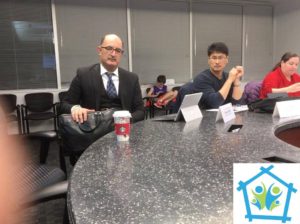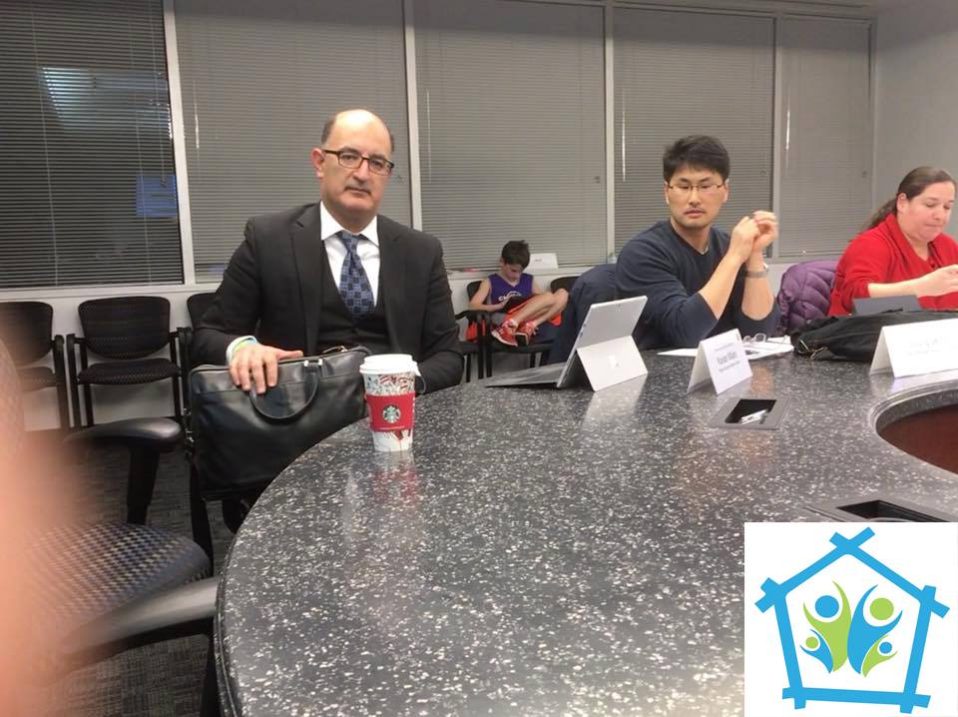-Ron Lapitan, Former Community Outreach Coordinator
Talk Center for Health and Human Rights gave this evening to the Student Health Advisory Committee, an group of individuals with a stake in the health of Fairfax public school students who use their influence to move policy:
Hunger amongst students seems to be on the minds of faculty at all the schools we work with. Specifically, we are worried that students who benefit from free lunch are still hungry throughout the day because it is not enough for them, and there is also a minority of students in need who do not sign up for free lunch. Teachers and faculty we have spoken to say they know of students who are still hungry throughout the day, and they often take personal measures to address this, such as buying a stock of snacks out of pocket to keep in their class to give to students whom they see are hungry. One teacher from Marshall High School told us:
“I know that several teachers keep food in their rooms out of pocket for kids who are hungry. I have two former students who have been coming to me for breakfast for the past several years. I just keep a box of granola bars in a drawer and they help themselves. I’ve also given money to students for lunch or the vending machines. If I receive special treats or pizza, I’ll put a little aside for some of my kids who are always hungry.”
We think this issue deserves more visibility and have two recommendations for how to improve the situation:
1. One recommendation is to raise awareness about the free lunch program and the problem of student hunger amongst students and faculty. For example, we have been told that new students might go without lunch for months simply because they are not aware there is a free lunch program. Other families never sign up because they misunderstand the nature of free lunch. A Marshall High School teacher said, “We have kids whose parents don’t want to apply for free or reduced lunch because of pride or immigration fears, so the kids don’t have food during the day.” These gaps could be easily addressed by measures such as putting posters in hallways to make the existence of free lunch common knowledge, and that information collected is only used by the school, and there is no need to fear it will be used by federal programs.
Students’ rights should also be made common knowledge. For example, I once observed a conversation between a front desk staff at Herndon Middle School and a student who was sent there by her teacher because she was hungry in class. The staff asked, “Why didn’t you pack a lunch from home?” The student answered, “There’s no food at home.” The staff asked, “Can’t you go to the cafeteria to get lunch?” The student answered, “I didn’t have money, so they told me I couldn’t get lunch.” In FCPS, it is illegal to turn away a student for lunch even if they don’t have money. They should be able to incur a balance on their account if necessary, and this is something both that student and the lunch staff should have known that.
2. The second recommendation is to learn what measures schools already have. For example, at Marshall High School, they keep a stock of snacks in the Student Services Office, and if a student ever comes to get snacks because they are hungry, a social worker and a counselor come together to create a long-term plan to help that student not feel hungry during the day. Herndon Middle School has something called the H3 Program where students get donated non-perishable foods on Fridays for the weekend. Annandale High School has a food pantry which is stocked by community donations, and they do occasional tours so that members of the school know that it is there.
After learning about the programs that already exist at the schools, measures should be taken to fill in their gaps, such as by simply making it common knowledge for students that these resources are available. For example, many schools have a food pantry that most students and even faculty are not even aware is there. These pantries could be revived by making it common knowledge to the school community that they exist, and then raising support from the community to stock them.
If needed, our organization would be happy to use our presence in the schools to work with them to implement these recommendations.
____________________________________
Results: The Committee is very interested in exploring ways to raise awareness about the issue of student hunger in the schools and in exploring creative ways to ensure that students don’t have to be hungry during the school day.
(Image: Dr. Milani, also a board member of SHAC, at the meeting.)




Post a comment